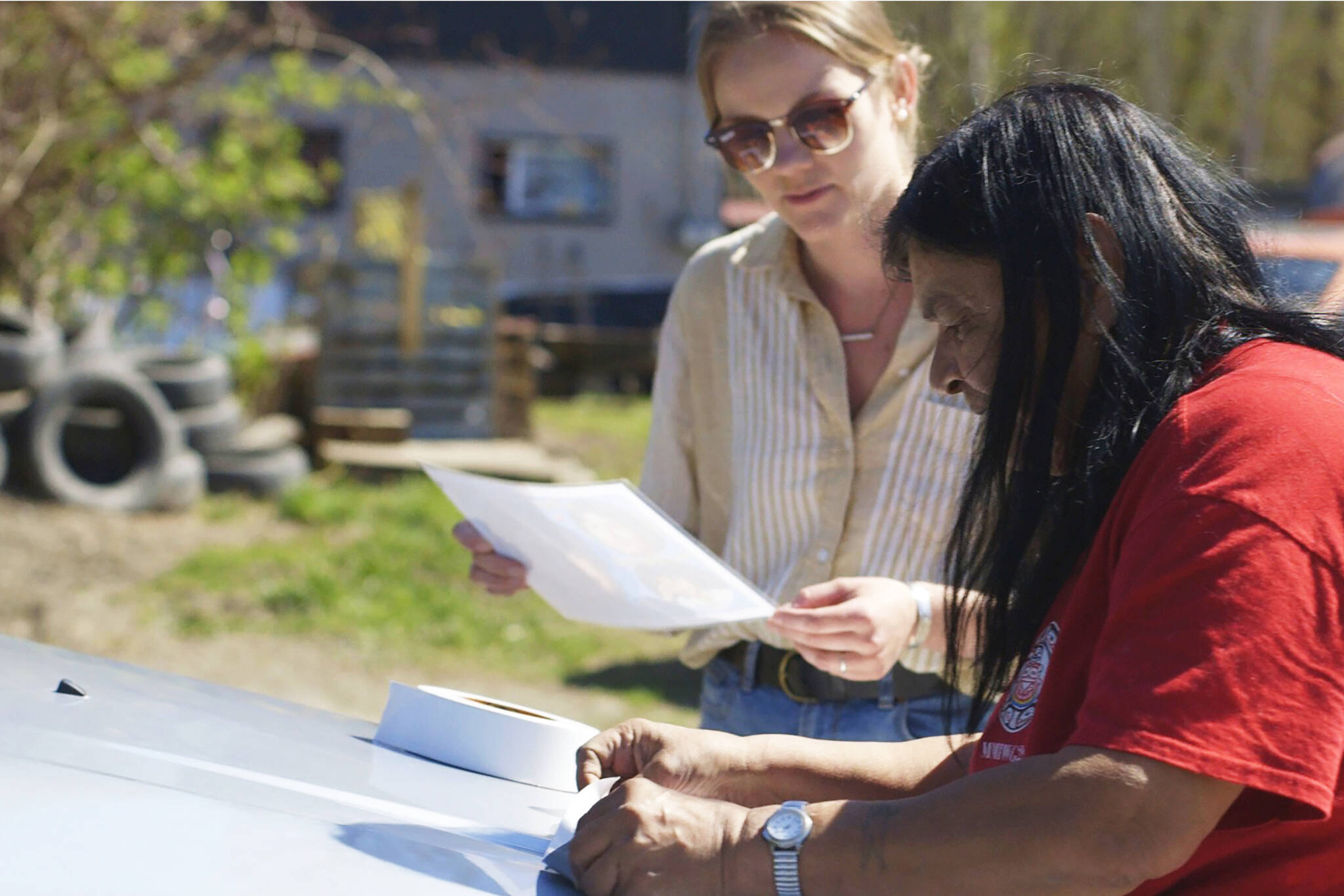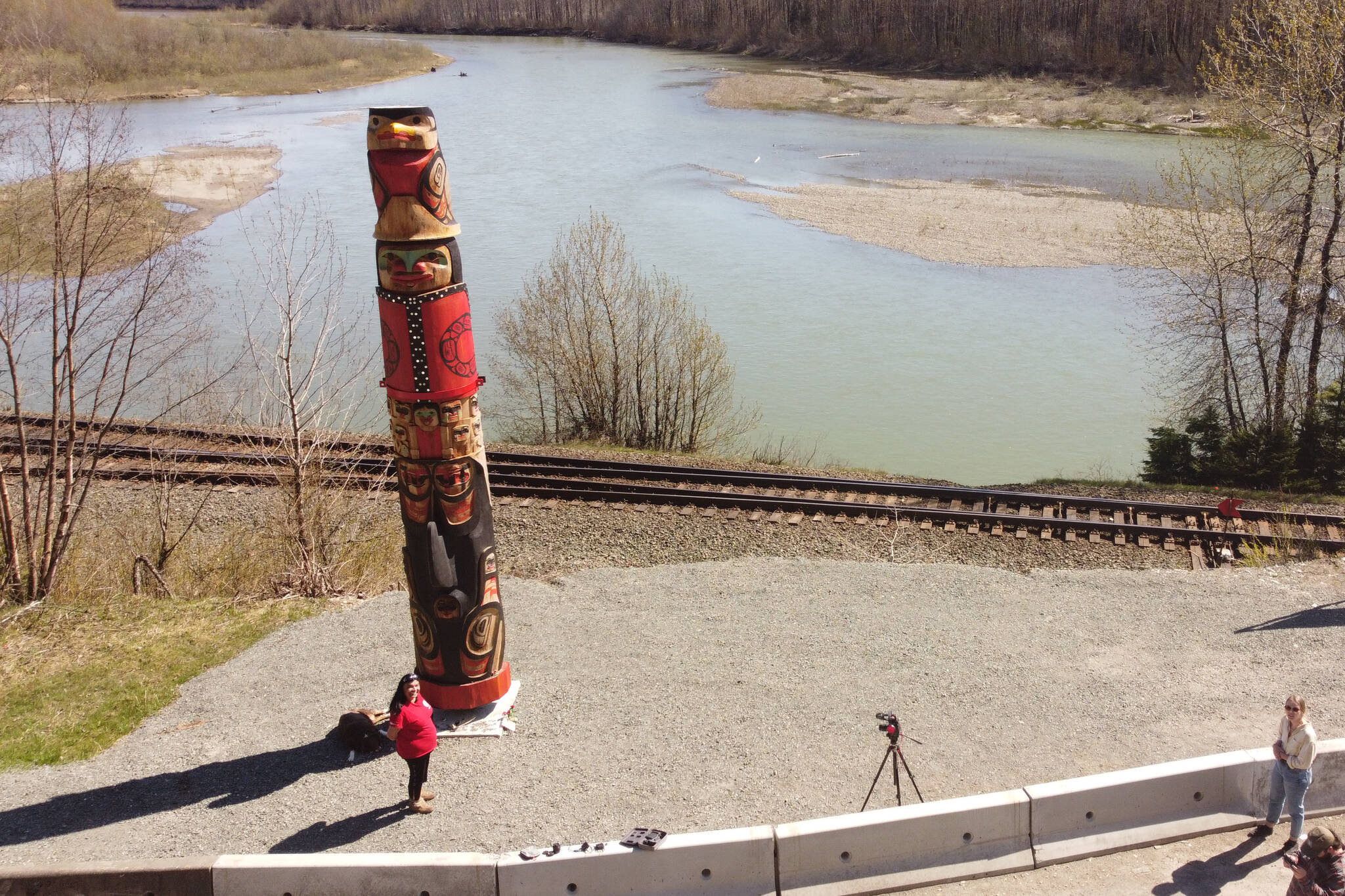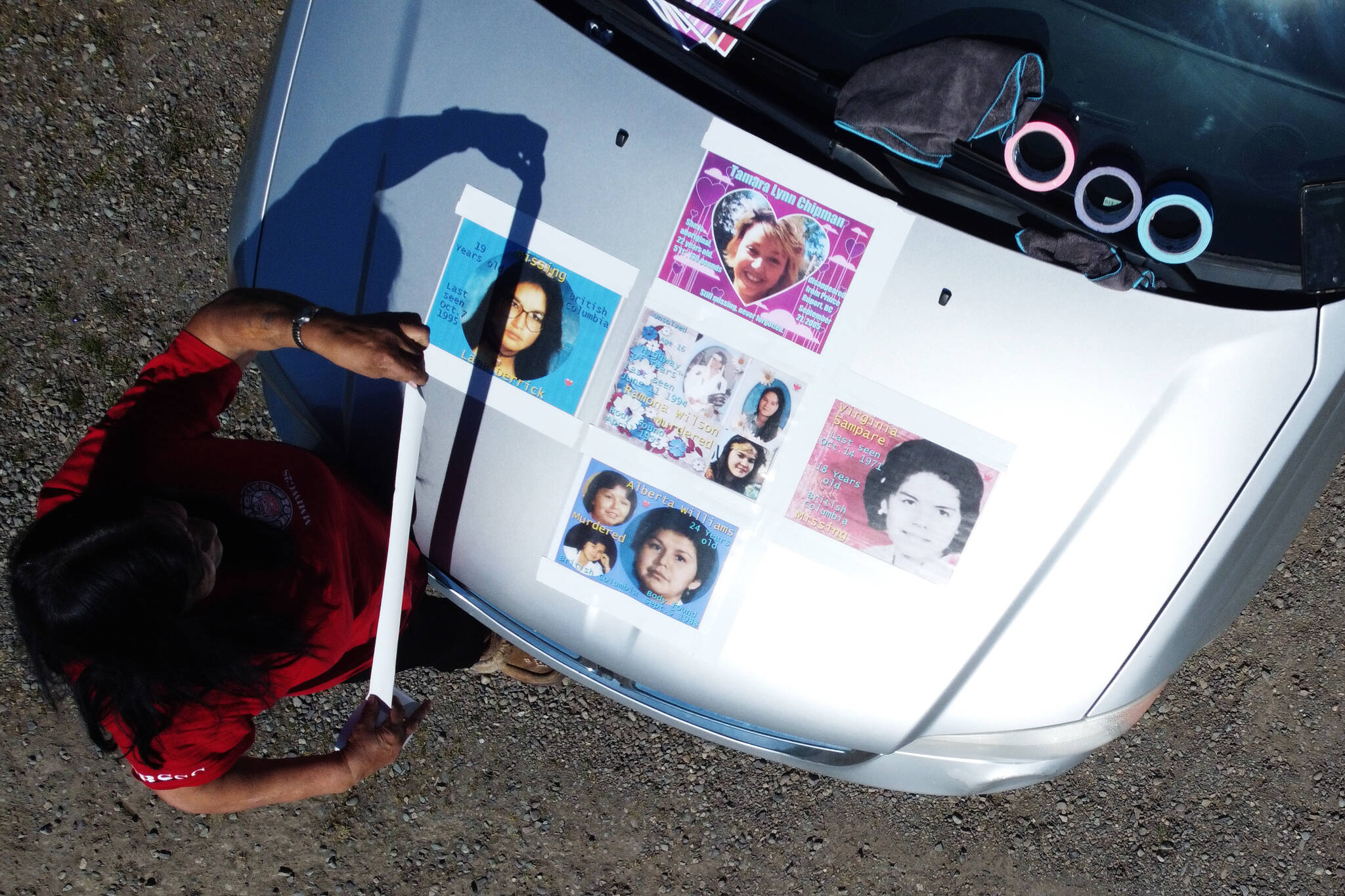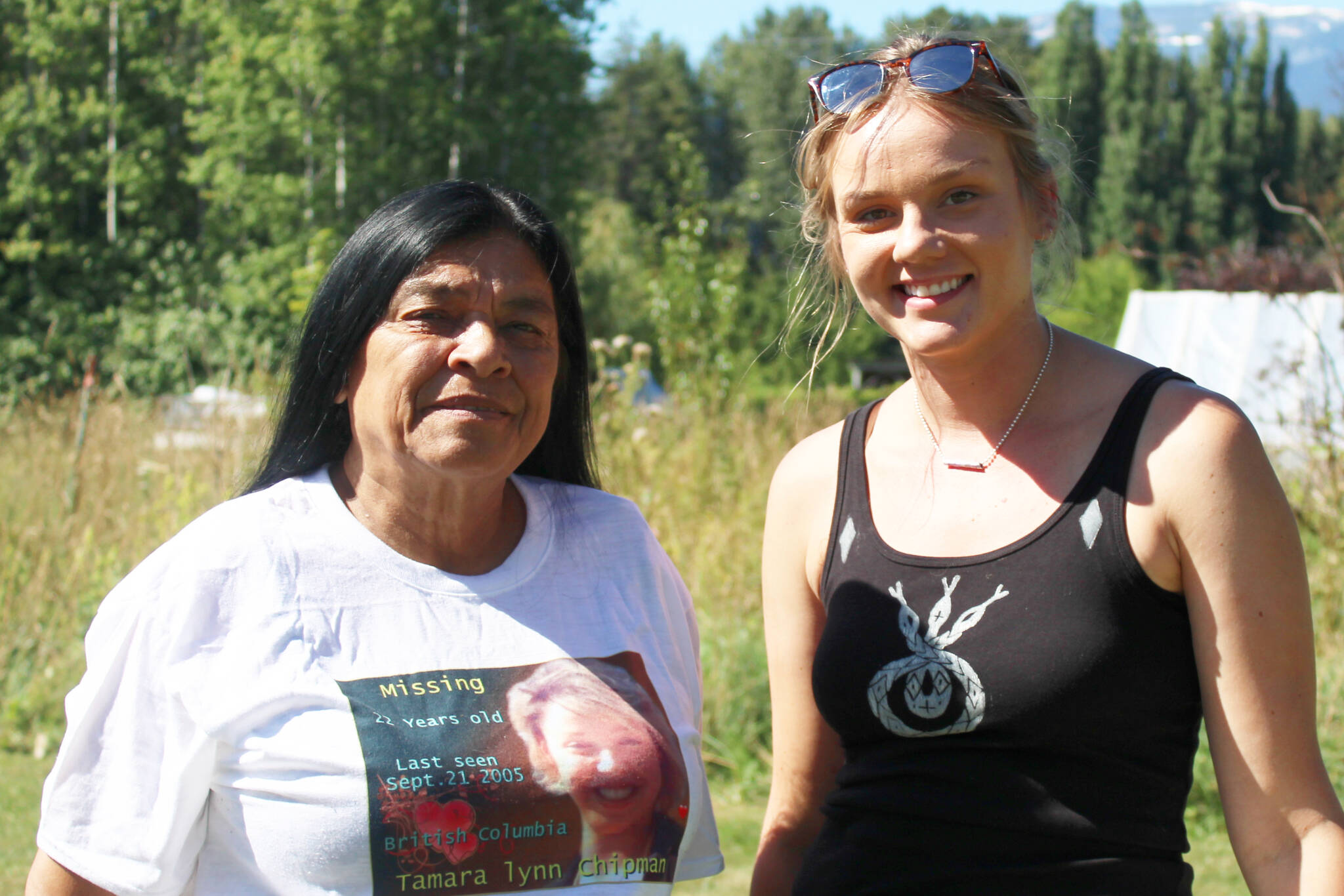Terrace filmmaker Jaylene Matthews’ debut short documentary, Gladys Radek: Journey for Justice, is a hard-hitting glimpse into the life and perspective of a pioneer for Indigenous women’s rights in Canada. Matthews, who grew up in Mission, met Radek while working as a news reporter in 2017 after moving to Terrace.
“It was just before they were doing the hearings for the National Inquiry into Missing and Murdered Indigenous Women and Girls (MMIWG). I was standing outside when she pulled up in her car with all the posters of the missing women on it,” Matthews said.
Radek has been fighting for justice since the disappearance of her niece Tamara Chipman in 2005, crossing the country several times calling for a national inquiry into MMIWG.
Pointing to ongoing disappearances along Highway 16, Radek played a key role in bringing about the national inquiry and, more locally, leading to improvements in transportation systems and highway signage.
The 722 kilometre stretch from Prince Rupert to Prince George is called the Highway of Tears, named after the grief of families longing for loved ones. Through Radek’s insights, the film explores some of the more memorable moments of her journey through her own words and leading up to when she began her more public activism.
We also hear from local archaeologist Amanda Marshall, who is helping Radek plot a map of search sites where they might be able to find remains of missing people.
We also meet Mike Dangeli, who carved a commemorative totem pole to help the families of the missing and murdered better grieve, based on Radek’s vision.
Storm Carroll from Skeena River Media did most of the cinematography and Mique’l Dangeli performed a song and drum that is used as the musical score.
Matthews studied broadcasting at the B.C. Institute of Technology and worked as a video journalist doing video stories for news, but this was her first documentary project outside of school.
The project is supported by Telus Storyhive and the National Screen Institute who paired Matthews up with Jules Arita Koostachin, a member of the Directors Guild of Canada and an award-winning filmmaker with a PhD from the Institute of Gender, Race, Sexuality and Social Justice at UBC.
“She was a really good mentor for me, who helped me throughout the process, so I was in touch with her from the beginning,” Matthews said, adding that Telus also does workshops throughout the process.
“They have a rough cut and two other cuts that you submit, and then they come back with feedback. And so there’s some back and forth there. But mostly, they leave it in your hands as long as everything’s going OK.”
Matthews hopes the film will help personalize missing and murdered women through Radek’s powerful narrative.
“I find that the RCMP and the regular news coverage of it really desensitized you from caring about the women just because they used a bunch of mug shots and sort of made it impersonal,” Matthews said.
“Especially once I met Gladys, I had an interest in hearing the real stories of the family members. These are people’s family members that went missing.”
Radek’s journey is far from over as she continues her work to find answers. She told The Terrace Standard that she’s fighting for more healing and wellness centres in B.C. and plans to bring those issues forward in Terrace.
“People really need to heal right now. The churches aren’t going to heal us, they’ve done their damage. When our people come up and start healing, then we’ll be better,” Radek said.
“Bring us back to our land. Bring us back to the way we used to be where we could live off the land, where we could believe in mother nature and her role in providing for us everything that we needed.”
Gladys Radek: Journey for Justice launched online Aug. 17 and you can watch it below.
READ MORE: Keeping alive the stories of murdered & missing Indigenous women and girls
READ MORE: Northwest B.C. families come together to tell the stories of MMIWG in new film Adaawk
Do you have a comment about this story? email:
michael.willcock@terracestandard.com




